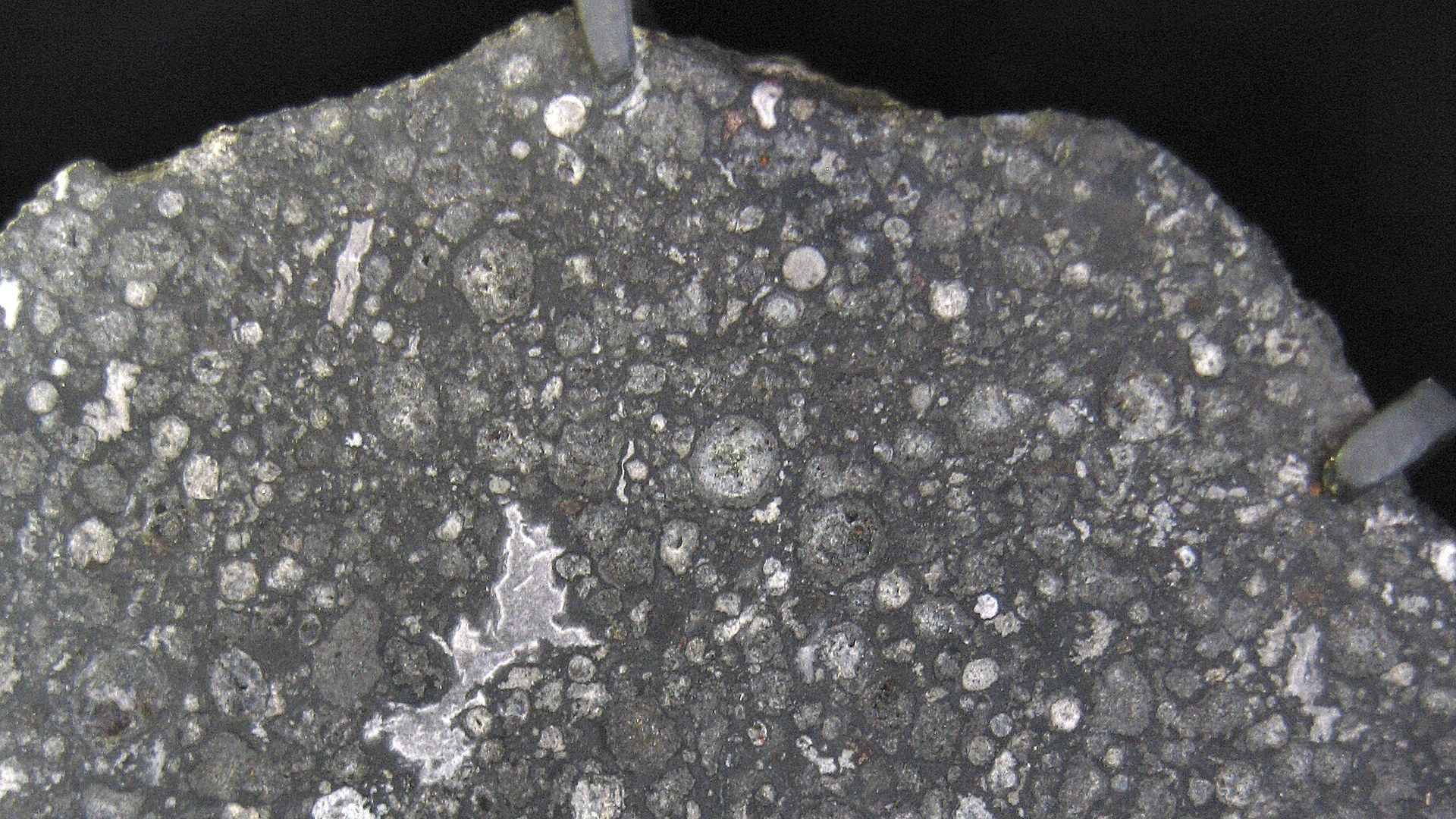The 'Allende' Meteorite, a carbonaceous chondrite
The 'Allende' Meteorite, a carbonaceous chondrite
The Allende Meteorite is a carbonaceous chondrite, a carbon-rich class of rocky meteorites. It was named after the Pueblito de Allende in Mexico, in whose surroundings numerous pieces of an asteroid weighing several tonnes were found. It broke up in the atmosphere on 8 February 1969. Typical are the spherical ‘chondrules’. The silicate spheres are considered to be the 4.5 billion-year-old building blocks of the planets. The Hayabusa2 scientists also assume that the material on Ryugu corresponds chemically approximately to that of the chondritic meteorites. Hayabusa2 has taken samples of Ryugu that are on their way to Earth. Their analysis in the laboratory is eagerly awaited.

